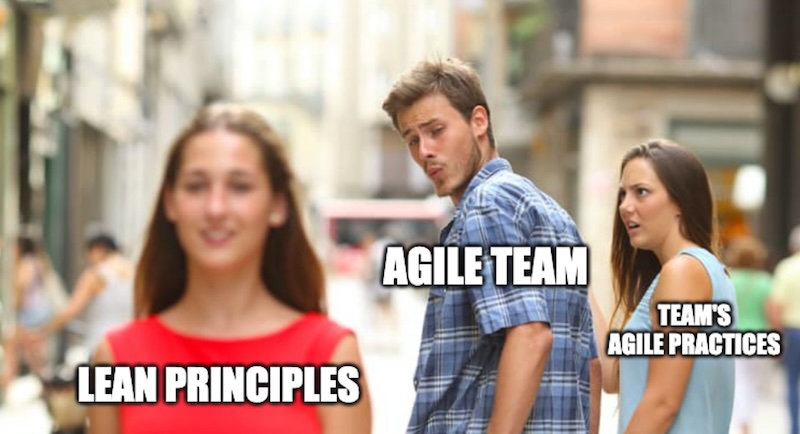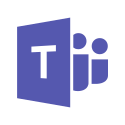
Eliminate waste from your Agile practices

The past two years have been nothing short of seismic (okay, maybe not tectonic, but close!) for the software development industry. As most markets and industries are fully saturated - with few exceptions (yes, AI!) -, there is a shift towards efficiency for most of the business.
In this post, we'll dive into how to apply efficiency to Agile workflows within your company. I’ll keep it practical, with examples and questions to guide your leaders and teams toward peak efficiency.
Why Bother with Efficiency?
The word "efficiency" must be really (b)loaded these days as we might hear it more often than in the past. There might be a few slides in an all-hands with the word taking prime real-estate, and people blurring it in various contexts and content discussions.
Efficiency became a thing in 2022 when the "Growth at all costs" model didn't apply anymore. Since 2022 we've seen many down-rounds in Saas companies that dropped their valuation two to ten times down. Here's a good report by Sapphire, summarizing the state for 2023 and sharing predictions for the future.
Companies are now striving for healthy growth—making sure that profits outweigh expenses. It’s all about keeping money in the bank without burning through resources.
Efficiency 101
Efficiency isn’t a new concept. It’s been at the heart of Agile practices for over 25 years. The Agile Manifesto principles have a clear message about improving team efficiency, yet the idea is to improve working increment efficiency.
Since then, we've developed a full set of tools and frameworks to facilitate what the Agile Manifesto states. But let’s not forget where it all started: with “lean” principles, introduced by Toyota post-WWII to fast-track profitability.
Hence, I would suggest re-studying the Toyota Way and the Toyota Product System (TPS) to identify areas you can assist your company with efficiency.
Applying lean principles to your Agile implementation
Applying lean principles to your agile implementation sounds kind of meta, as your agile practices are based on lean principles already!

The goal is to cross-check your current agile practices and ceremonies against the lean principles. If a practice or ceremony is irrelevant to your team's current needs then feel free to drop it.
Identify non-serving processes in a Retrospective
Working in an agile way, we already do that in retrospectives, where we evaluate what's missing that will make the team work better together. We create action items and apply the required changes to facilitate the team's emerging needs.
Following the same principles, you can have a retrospective where one of the columns is around "What's not serving us anymore?", or "What used to be an accelerator but now it's an anchor?". Remember, that the whole deal is to identify processes and flows that haven't aged well as your team is still growing.
Evaluate the value you get from your estimation sessions
Planning poker, or estimation sessions, is a vital ceremony for teams starting with agile. As the team matures in its agile journey, alignment and shared understanding of the work to be done are achieved.

Check-in with the team whether you can adopt a different way to estimate work increments, not involving a dedicated session or even an async method. Review your team's alignment over estimating effort and actual effort for the last period, if there's an alignment of estimation values and actual effort you're in a good state to leave planning poker behind 🙂. On the contrary, if the estimation values of the team diverge a lot or the actual effort does not align with the estimation, it might be too soon to drop this habit.
Be an agile transformation ambassador
As efficiency is working across the whole company, there is a chance for any agile transformation coaches and contracts to stop. The demand for agile coaches has changed in 2023 and the trend continues in 2024. Various discussions around the need for Agile Coaches might affect your company too.
Companies expect the whole team - already accustomed to agile practices - to take over a big part in the transformation. This can be impactful when you try to propagate good agile practices to other teams you work with. Keep an open mind, and discuss with your colleagues from any department why and how an agile practice can benefit the collaboration.
In this case, tools are your friend:
Suggest an async way to share knowledge vs. another meeting to secure more time
Suggest a retrospective to evaluate and improve your collaboration
Share how your agile team works and what are the benefits coming out of this. What tools do you use, and what meetings and processes?
Keep building trust and a safe environment as the basis for open communication
Building trust and cultivating safety of expression, means that you extend the team's or company's reflexes to surface any impediment or malfunction. Instead of being a selected few people who need to watch for areas of improvement, you scale that to the whole company.
Use retrospectives to identify areas of improvement and take actions
Ask your colleagues to challenge your thoughts and enter a constructive dialogue with a no-blame mindset.
Share knowledge and thoughts even at an early and maybe "dumb" phase, where the idea is still immature in your head, to cultivate a culture of sharing and knowledge.
Although trust and safety do not offer instant efficiency improvements, cultivating these you play the long game; Combining the principles of "Long-Term Philosophy", "Pull Systems" and "Develop People" from the Toyota Production System.
Continuous Inspect and Adapt
I hope this piece introduced a few perspectives you haven't thought of around Agile. One key point I'd like to leave you with is this:
Continuously inspect and adapt your processes. Keep your eyes and mind open as to where you can apply agile, whether case A from Product Marketing can be accommodated with what you do for case B in Engineering, and finally, whether that thing "you were always doing" still serves your current purpose or is dragging you back.
Inspecting and adapting to current business needs around efficiency is not something you will leave to your current company and employer, but something you'll add to your bio and carry on to your next position.

More articles to check

Assist your team's growth with our partnership program:








